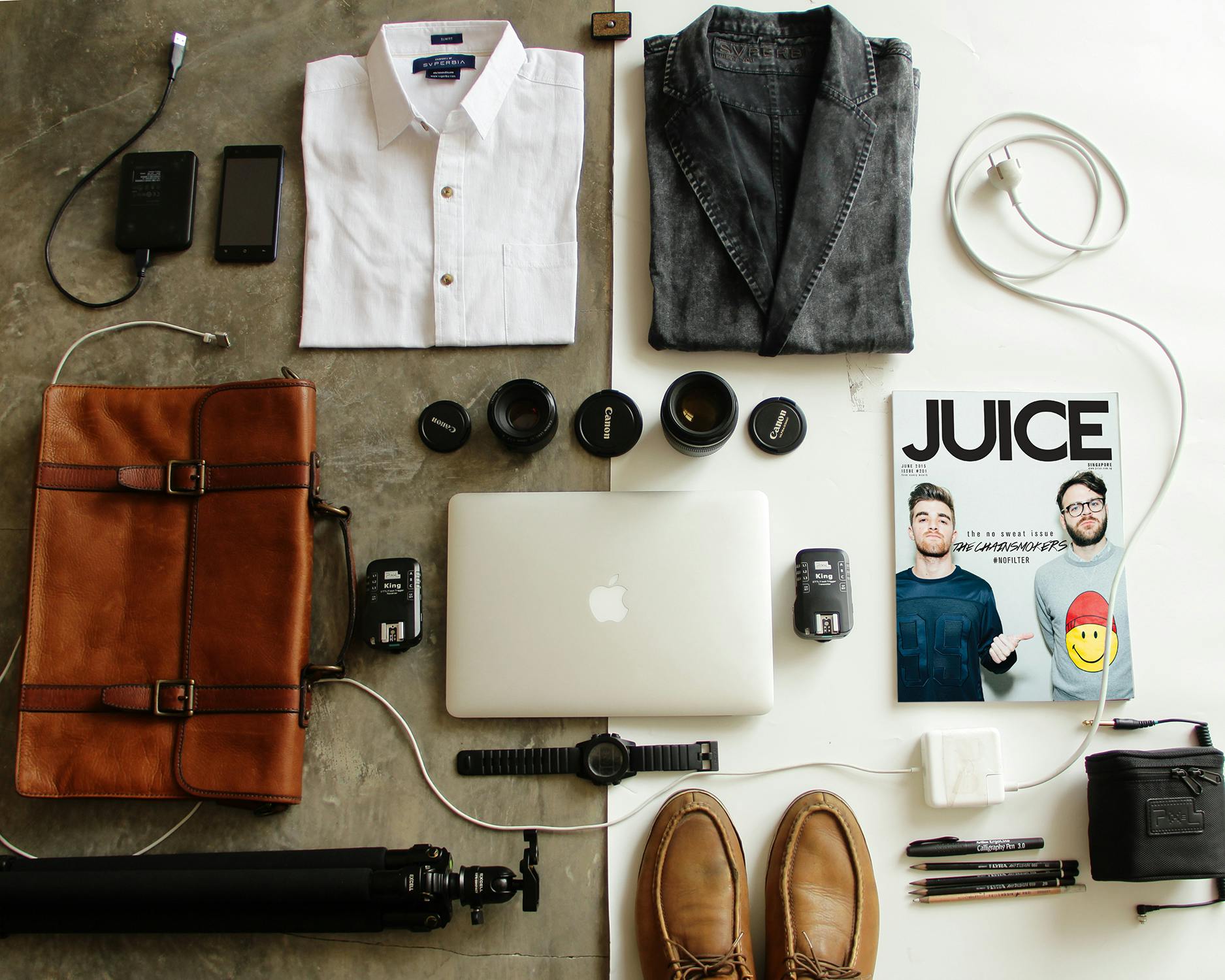Planning Ahead for Smooth Sailing

Choosing the correct venue is key; it’s about weaving together everyone’s interests into a beautiful tapestry of shared experiences. Mapping out the route is not just about avoiding traffic; it’s an art. Finding those gorgeous paths that transform a routine drive into an adventure. Scheduling pauses is equally vital, creating that perfect balance between driving time and periods of relaxation and discovery, enriching your vacation with memories.
Preparing the car is the cornerstone of your adventure. It’s about more than simply safety inspections; it’s establishing an environment where comfort meets ease, ensuring every kilometre is as delightful as the destination itself. This precise planning sets the setting for a road trip that’s not just a journey, but a treasure trove of experiences, waiting to unfurl.
Packing Essentials and Beyond

Creating a Master Packing List: Ensuring Nothing Gets Left Behind
- Begin with a master packing list. This is your blueprint. It ensures that every necessity, from socks to sunscreen, finds its way into your suitcase.
- Tailor this list to your family’s exact needs, including the destination, the length of your trip, and any activities planned.
- This strategy not only speeds packing but also alleviates the concern of forgetting anything crucial.
Entertainment for the Road: Digital and Non-Digital Options for All Ages
- Audiobooks and playlists can captivate for hours.
- Classic automobile games like ‘I spy’ and travel-sized board games boost family bonding.
- This variety keeps boredom at away and caters to all ages, making the miles fly by.
Snacks and Meals: Healthy, Mess-Free Options
- Opt for healthy, mess-free options such sliced fruits, nuts, and sandwiches.
- These keep energy levels consistent and limit clean-up, allowing you focus on the adventure ahead.
- Remember, hydration is vital, so carry lots of water alongside your food.
Emergency Kit: First Aid, Tools, and Essential Documents
- An emergency kit is your safety net. It should include a first aid kit, basic tools, a flashlight, and essential documents like insurance and roadside assistance details.
- This preparation ensures peace of mind, allowing you to confront any unexpected obstacles with confidence.
Integrating these components into your road trip planning increases the experience, making it smoother and more pleasurable for everyone involved. It’s not only about reaching your destination; it’s about making a journey filled with joy, laughter, and wonderful experiences.
Keeping Everyone Entertained and Engaged

Once you’re on the road, the true difficulty begins: keeping everyone entertained. It’s a careful line, merging interactive games with technology and promoting innovation. The goal? To make every km a joy, not a burden.
Interactive Games and Activities
- Start with the classics. License plate games, where you spot different states or nations, can turn into a fascinating geography lesson.
- Storytelling, where one person starts a yarn and each passenger adds a bit more, generates imagination and fun.
- These hobbies not only pass the time but also improve family bonds.
Leveraging Technology
- Technology is a traveller’s best friend. Audiobooks bring stories to life, attracting listeners of all ages.
- Curate playlists Featuring everyone’s favourite tracks for a sing-along session.
- Educational apps, adapted to your children’s ages, may be both fun and educational, turning screen time into learning time.
Encouraging Creativity
- Encourage your kids to capture the journey. Drawing what they see out the window, writing their ideas, or taking on photography challenges can be immensely satisfying.
- It’s not just about keeping kids occupied; it’s about letting them experience the world through a creative lens, building memories that last a lifetime.
Integrating these factors into your road trip guarantees that the route is as enriching as the destination. It converts hours on the road into an opportunity for discovery, learning, and bonding. After all, a successful family road trip is measured not by the mileage covered but by the memories created along the route.
Making Memories and Learning Together

Documenting the Journey
Every kilometre of your road trip is a tale waiting to be told. Encourage your family to capture these memories through photo albums, social media, or scrapbooking. This not only protects your memories but also allows you to share your adventures with others. It’s an innovative method to engage everyone, providing a personal touch to your journey.
Educational Opportunities
Turn your car trip into a learning adventure. Australia’s rich tapestry of historical sites, environmental reserves, and museums offers limitless educational opportunities. Whether it’s learning about Indigenous cultures, enjoying the distinctive Australian flora and wildlife, or studying historical events, these activities enrich your vacation with knowledge and admiration for the country’s legacy.
Reflecting on the Experience
At the conclusion of each day, take time to share your favourite moments and lessons learnt. This introspection not only enhances family relationships but also develops a greater understanding of the experiences shared. Discussing what everyone enjoyed the most or found most intriguing can emphasize the varied interests within your family, making the journey even more memorable.
Integrating these factors into your road trip preparation guarantees that the route is as enriching as the destination. It converts hours on the road into an opportunity for discovery, learning, and bonding. After all, a successful family road trip is measured not by the mileage covered but by the memories created along the route.
Staying Safe and Healthy on the Road

Health Precautions: Hygiene, Sun Protection, and Staying Hydrated
- On the road, maintaining excellent hygiene is vital. Regular handwashing, especially before meals, keeps viruses at bay.
- Sun protection is equally crucial; use broad-spectrum sunscreen generously and wear caps and sunglasses to defend against damaging UV radiation.
- Hydration cannot be overlooked. Drinking enough of water reduces dehydration, ensuring everyone stays alert and comfortable throughout the travel.
Safety Protocols: Seat Belts, Car Seats, and Not Leaving Kids Unattended
- Safety is non-negotiable. Always use seat belts and ensure children are in proper car seats. These basic precautions considerably lower the chance of injury in event of an accident.
- Never leave children unattended in the vehicle, since temperatures can increase quickly, posing major dangers to their health and safety.
Knowing When to Take a Break: Recognizing Signs of Fatigue
- Long drives can be exhausting. Recognizing indicators of fatigue is vital for the driver’s safety and everyone else on the road.
- Symptoms include yawning, heavy eyelids, and straying from your lane. Taking regular breaks, at least every two hours, allows everyone to stretch, rejuvenate, and switch drivers if necessary.
Integrating these health and safety concerns into your road trip planning assures a vacation that’s not only pleasant but also safe and healthy for everyone involved. By taking these precautions, you’re setting the stage for a fantastic family journey, filled with joy, laughter, and unforgettable memories.
Post-Trip Reflection and Planning for the Next Adventure

Gathering Feedback: What Worked and What Could Be Improved
- Once the dust settles, it’s crucial to sit around as a family and reflect. What moments caught your hearts? Which plans didn’t proceed as expected?
- This honest feedback is golden, paving the way for more easier travels ahead. It’s about learning and adapting, ensuring each adventure outshines the last.
Organising Photos and Souvenirs: Keeping the Memories Alive
- Sorting through images and gifts can be as thrilling as the trip itself. Allocate an afternoon for this wonderful task.
- Create albums or a digital slideshow, bringing the journey back to life. Display souvenirs in your home, turning them become regular reminders of your shared experiences.
Starting the Conversation About the Next Trip: Building Anticipation and Excitement
- With the latest experience still fresh in your minds, it’s the perfect time to think about the next. Where does the family yearn to explore next? What new hobbies are on your wish list?
- Initiating this conversation not only creates excitement but also provides everyone something nice to look forward to. It’s about keeping the spirit of adventure alive, excitedly anticipating the new stories you’ll write together.
Reflecting on previous journeys and planning future ones enriches your family’s adventure, making each road trip more memorable than the last. It’s a continual circle of adventure, learning, and growth, bringing everyone closer with every mile travelled.
In Conclusion
Road excursions strengthen family relationships and adventures. They balance delight with discovery, producing remarkable adventures. By methodically preparing and appreciating each moment, families convert vacation into treasure troves of learning and laughter. These experiences, founded in preparation, safety, and involvement, lay the path for future discoveries. Let’s keep the wheels of adventure spinning, nurturing a legacy of shared travels and progress.”
Tips for a Successful Family Road Trip FAQs
Incorporate visits to historical sites, museums, and nature reserves along your route to provide educational experiences. Discussing these destinations beforehand and relating them to what your children are learning in school or their interests can enhance the educational value. Also, encourage questions and discussions about the places you visit to further engage their curiosity and learning.
Use organizers or bags to keep items sorted by category (e.g., food, entertainment, personal care) and ensure everything has a designated place. This not only keeps the car tidy but also makes it easier to find what you need without unnecessary stops or searches. Encouraging everyone to take responsibility for their belongings and space can also help maintain order throughout the trip.
Pack a variety of activities such as games, books, and tablets loaded with movies and educational apps to keep children entertained. This variety helps to cater to different moods and interests, preventing boredom. Also, consider games that involve looking outside to encourage engagement with the surroundings.
Clearly communicate how long the drive will take and break it down into understandable segments for children, such as the time between movies or meals. This helps set realistic expectations and makes the passage of time easier for them to grasp. Providing regular updates on how much longer the trip will take can also help manage their expectations and reduce impatience.
Plan to stop every 2-3 hours to stretch, use the restroom, and let everyone get some fresh air. These breaks are crucial for preventing driver fatigue and keeping passengers, especially children, from becoming too restless. Incorporating interesting stops, such as scenic viewpoints or parks, can make these breaks more enjoyable and part of the adventure.
Opt for non-perishable, easy-to-eat snacks like granola bars, fruit snacks, and pre-cut vegetables. These types of snacks are not only healthy but also minimize mess and are convenient to eat in a moving vehicle. Additionally, keeping snacks within easy reach of passengers can help prevent stops and keep everyone satisfied between meals.
Ensure you have a first aid kit, spare tire and tools, snacks, water, and entertainment for passengers. Packing essentials like these covers basic needs in case of minor emergencies, hunger, thirst, and boredom. It’s also wise to include items specific to your family’s needs, such as medications or baby supplies.
Always ensure everyone is wearing seatbelts, follow speed limits and road rules, and make sure the car is in good condition before departing. Checking your vehicle’s tires, brakes, and fluids can prevent breakdowns on the road. Additionally, sharing your travel itinerary with a friend or family member not on the trip can provide an extra layer of safety.
Keep the car cool and well-ventilated, encourage looking out the window instead of reading or using screens, and consider over-the-counter motion sickness medication for those prone to it. These strategies can help reduce the likelihood of motion sickness by stabilizing the inner ear balance. Having small, frequent snacks and staying hydrated can also help alleviate symptoms.
Use a combination of GPS and physical maps to plan your route, taking into account rest stops, attractions, and potential traffic areas. This dual approach ensures you have a backup in case of technology failure and allows for more flexibility in your travel plans. Additionally, researching your route beforehand can help you identify must-see locations and optimize your travel time.

Jasmine Duque-Love is a mother of one and a practicing physiotherapist with a Phd in Physiotherapy

